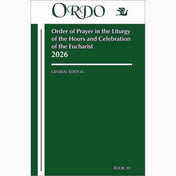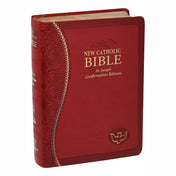From the desk of the Tar Heel disciple:
June 10, 2025
The well-known Hallow App recently featured a time of preparation for a consecration to Saint Joseph. Devotion to this now popular saint is presumed by most Catholics. But it has not always been so. Liturgical devotion to Saint Joseph came relatively late in the history of the Western Church. While the Coptic Church in Egypt may have established at a very early date the first feast in commemoration of the death of Joseph, only by the twelfth century are celebrations of the saint mentioned for either March 19 or 20 on the liturgical calendars of several European Benedictine monasteries. Carmelites and Franciscans afterwards contributed to this devotion, as did crusaders returning from the Holy Land, who brought with them alleged relics of St. Joseph, including his staff, cincture, and the betrothal ring he gave to the Virgin Mary. Chapels and churches were soon thereafter named in honor of St. Joseph.
In the fourteenth century, the Servites established a feast in honor of the saint, on March 15, for the members of their order. And in the years that followed, they, together with Franciscans, Dominicans, and Carmelites, were especially noted for propagating devotion to him. The late fifteenth century pope, Sixtus IV, a Franciscan, is usually credited with extending the feast of St. Joseph to the universal church, on March 19, though without an obligation for it to be observed everywhere. After the Council of Trent, Pope Pius V included the feast of “St. Joseph the Confessor” on March 19 in the 1570 Roman Missal. In 1621, the Holy See declared the feast a holy day of obligation.
In 1847, Pius IX set an additional feast of the “Patronage of St. Joseph” on the third Sunday after Easter. And in 1870, the same pope solemnly declared St Joseph to be the “Patron of the Universal Church.” This last feast was moved to the Wednesday before the third Sunday after Easter during a reform of the liturgical calendar in 1913. And in 1956, after Pius XII added the feast of “St. Joseph the Worker” (1955) to the calendar, on May 1, the feast of the “Patronage” was abolished.
Beginning in the fifteenth century, permission had been given to various religious communities and localities to celebrate a feast in honor of the “Espousals of the Blessed Virgin Mary and St. Joseph.” Over the course of many years, this commemoration was celebrated on different dates, though January 23 appears to have been the most common one. In 1961, during another calendar reform, permission for the observance of this feast was withdrawn, with only a few exceptions.
In our day, because of even more recent modifications in the Church’s liturgical calendar, March 19 is now observed as the “Solemnity of St. Joseph, Spouse of the Blessed Virgin Mary.” (The more recent commemoration on St. Joseph the Worker now has the rank of an optional memorial.) The current edition of the Roman Missal also contains a votive Mass of St. Joseph, which can be used at the discretion of the priest celebrant on days on which it would not be impeded by liturgical law. Finally, the Feast of the Holy Family, celebrated on the Sunday of the Octave of Christmas (or on December 30 when the is no Sunday within the Octave), might also be included among the liturgical commemorations of St. Joseph.
St. Joseph, pray for us!




